Should kitchen walls be lighter or darker than cabinets? This is the secret to a bright kitchen, according to pros
These are the key things to think about when choosing a kitchen colour scheme


The question of 'should kitchen walls be lighter or darker than cabinets?' might not be your initial conundrum when designing a kitchen, but when you delve into the details it will have a huge impact on the look and feel of a space.
Whether you're dealing with a particularly small kitchen idea, struggling with a lack of natural light or just stuck on choosing a kitchen colour scheme, the colour of your kitchen wall ideas can make or break a design. But it's not as simple as just choosing your favourite paint shade for your walls because the colour of your kitchen cabinets will come into play.
Selecting the best colours for a kitchen that look stylish and also make the room appear lighter and bigger will make a cooking space much more enjoyable to spend time in. But before you begin to decide on your colour scheme, knowing whether your kitchen walls should be lighter or darker than cabinets will give you a practical place to start.
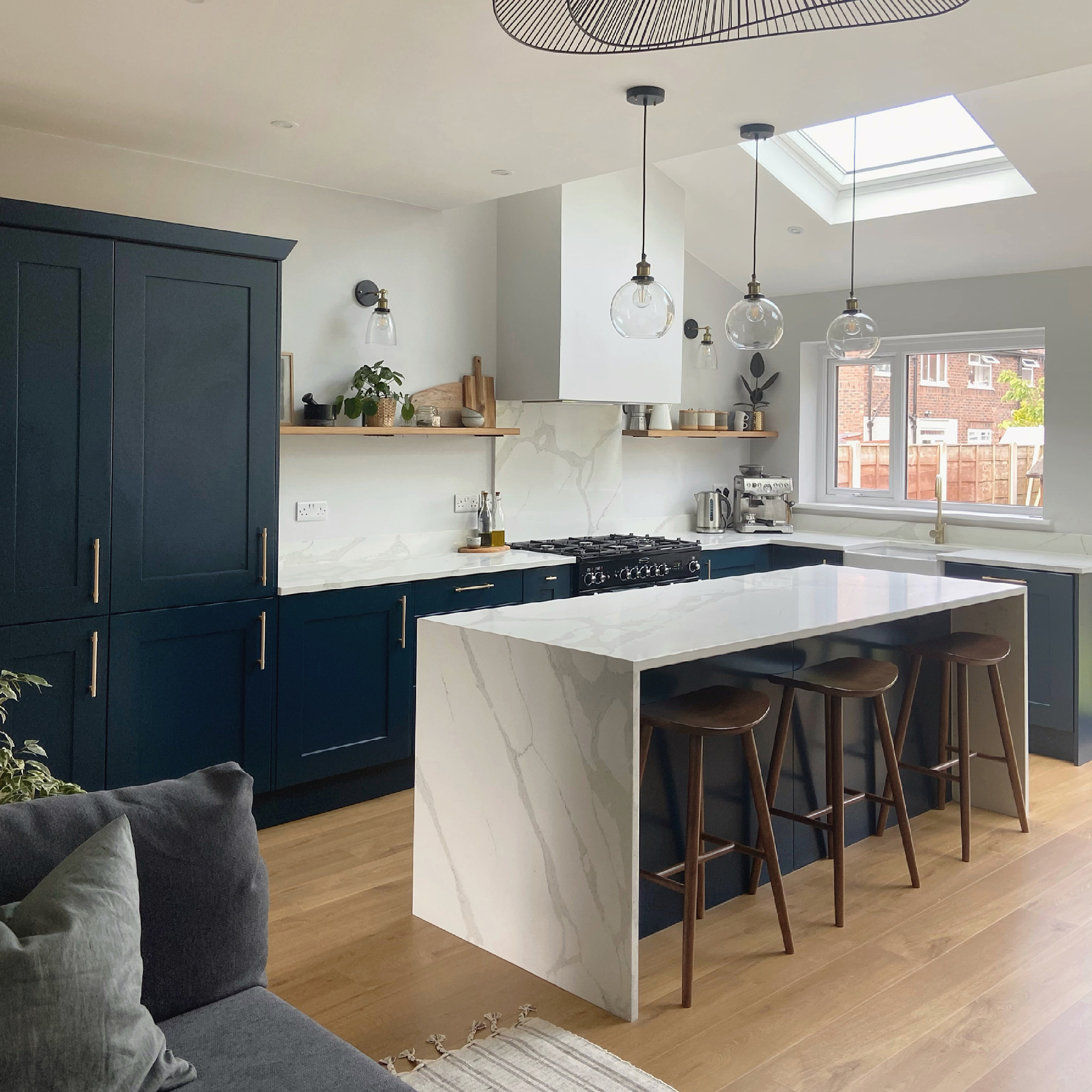
Should kitchen walls be lighter or darker than cabinets?
There are no hard and fast rules about whether kitchen walls should be lighter or darker than cabinets. It comes down to a combination of factors: the shape and size of your kitchen, the natural light available, your taste in colour and how brave you're prepared to be.
Ultimately, you can go either way. But there are some pros and cons to each decision, as explained by William Durrant, founder of Herringbone Kitchens.
'There is no set rule for whether or not your kitchen walls should be darker or lighter than your kitchen cabinets, it really is down to individual taste and preference. Firstly, when picking the colour of your kitchen and the surrounding walls make sure that it is right for you, your space and your personality. It's important that you like the colour, tone and contrasts as it's a room you will use daily,' William advises.
'If you like pops of colour and aren't afraid of a mix of strong colours on your cabinets and walls go for bright yellows with pastel pinks, greens or greys or if you are more likely to bring in colour through your accessories whites, taupe, terracottas work well throughout the kitchen and can be paired nicely. Depending on the colour combinations a two-tone kitchen space can bring balance, contrast or boldness to the space, which makes you want to spend even more time there.'
Sign up to our newsletter for style inspiration, real homes, project and garden advice and shopping know-how
1. Create a contrast
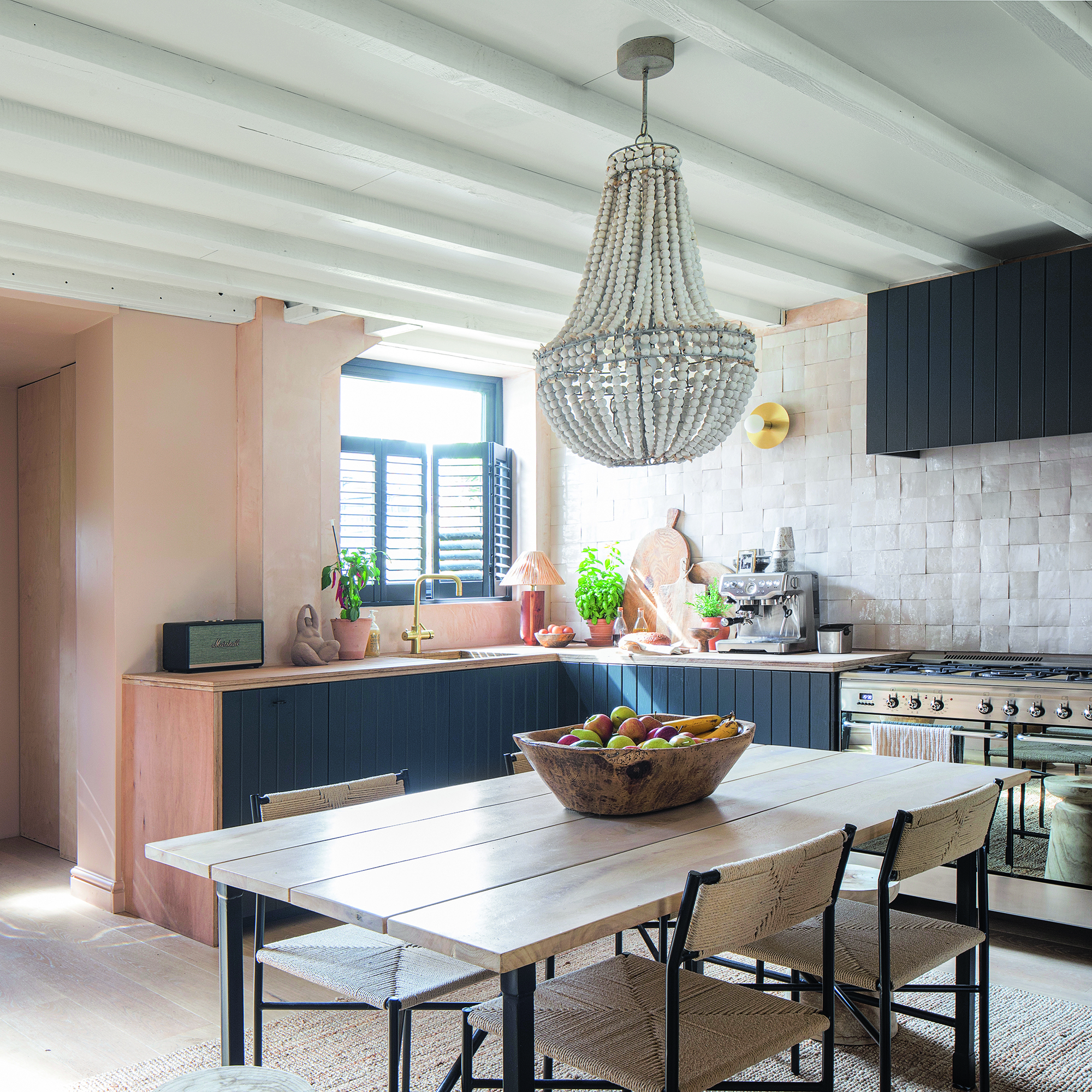
One of the most common colour combinations is to go for dark kitchen cabinets and lighter walls. Many homeowners favour darker cabinet doors as they hide dirt and look contemporary, so pairing them with bright neutral walls will prevent the design from looking overcrowded and dreary.
'If you prefer a more dramatic contrast, you can opt for dark cabinets with white or light grey walls to create a striking visual impact. Additionally, incorporating natural wood tones for cabinets with neutral or muted wall colours can add warmth and texture to the kitchen,' recommends Sophia Aryton-Grime, founder of Studio Raff.
Instead of choosing bright white, which might look stark next to dark cabinetry, opt for a 'new neutral' aka shades like mushroom, taupe, and linen that still offer a lightening effect but will be slightly softer.
2. Drench walls and cabinets in a statement hue
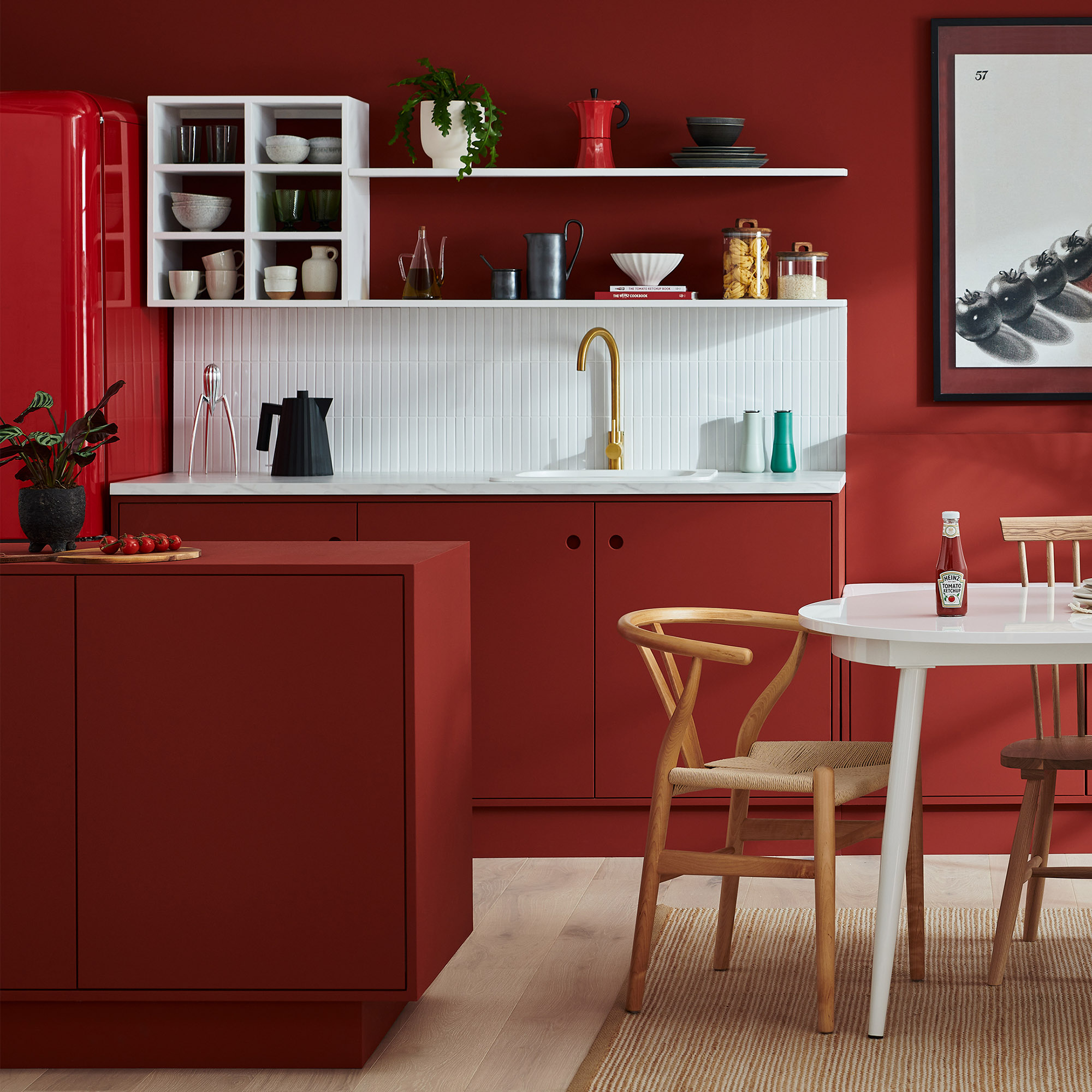
Can't decide whether to go bold on your kitchen walls? Leaning into a statement look isn't as scary as you might think. In fact, colour drenching takes all of the thinking out of the equation as going matchy-matchy is the goal. Fewer decisions and a trendy outcome are the dream solution, right?
If you do decide to say ciao to differentiating your kitchen walls and cabinets then just make sure you don't forget about architraves - painting the finer details will make colour drenching look intentional.
3. Opt for a tonal look
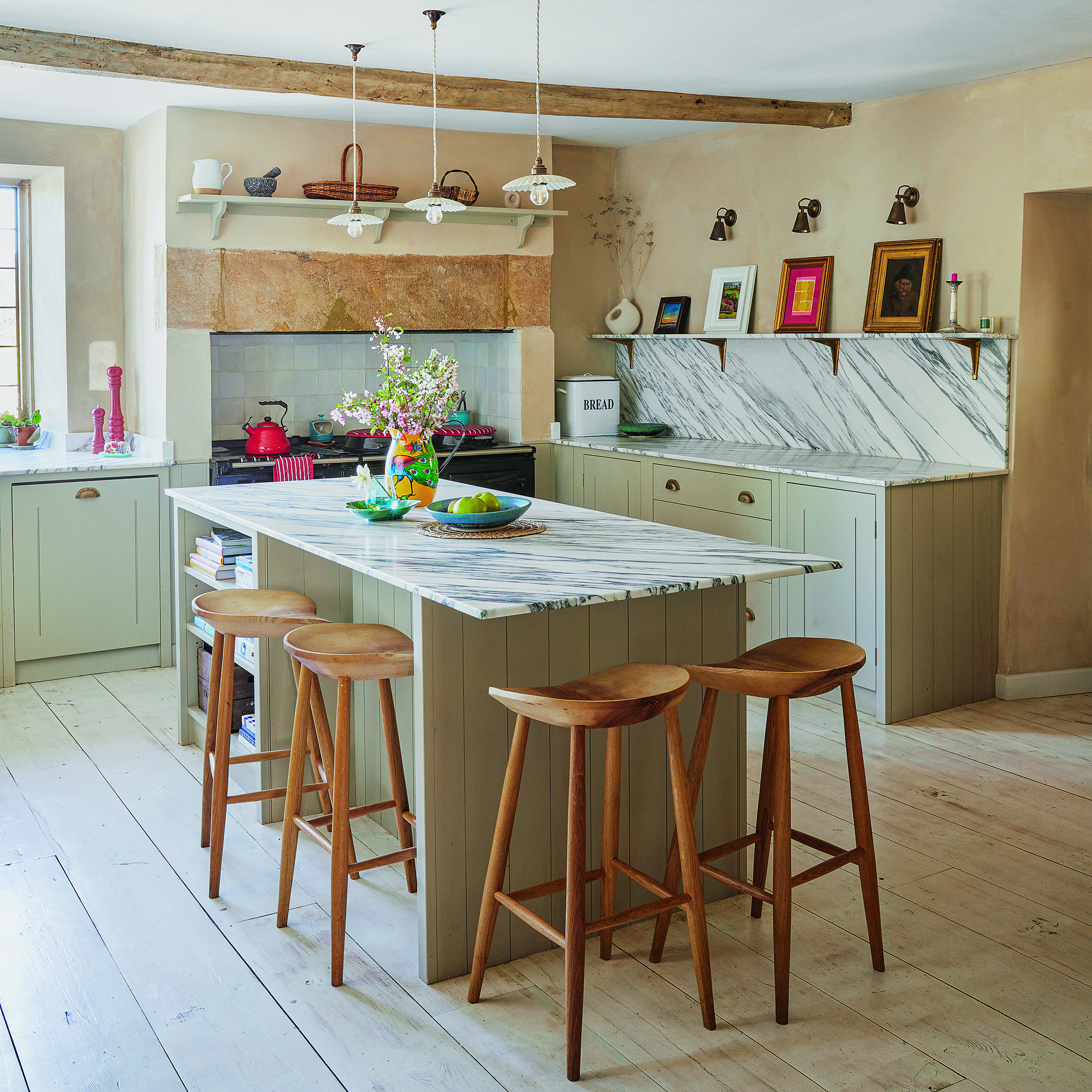
Rather than focusing on a contrasting look between cabinets and walls, choosing tonal shades will create a softer effect that looks effortlessly curated.
For example, if you've opted for sage green kitchen cabinets, look for similar dusky tones for your walls so that there's a subtle contrast but it all ties together seamlessly. If you're a bit worried about using darker tones this is an easy way to dabble in playing with colour without creating a dramatic look.
If you want a trending colour that is still relatively subtle, Interior Designer Laura Stephens says, 'I am really enjoying yellow on the cabinets right now - ‘Brimstone’ from Paint and Paper Library is a lovely buttery yellow which looks gorgeous with ‘Lots Road’ from Mylands (a creamy warm neutral) on the walls.'
4. Contrast cabinet colours

Alongside contrasting the colour of your kitchen walls, you can also vary cabinetry shades for a more dimensional look.
It doesn't just have to be a case of picking two shades, one light and one dark, for your kitchen colour scheme. The world is your oyster but we recommend adding a third into the mix, especially when featured on a kitchen island. Choosing an alternate colourful kitchen island idea will create an eye-catching focal point and allow you to try out a darker colour without committing to using it on the walls.
FAQs
How do the colours of your kitchen walls and cabinets affect light and space?
Whether you're dealing with a small and dark kitchen or you just want to make use of some cabinetry tricks to make a kitchen look bigger, paint and colour can have a huge impact.
'The colours of your kitchen walls and cabinets can significantly affect the perception of light and space. Lighter colours, such as white, cream, or pastels, reflect more light and make the room feel larger and more open,' says Sophia Aryton-Grime.
'On the other hand, darker colours absorb light and can make the space feel smaller and more intimate. Additionally, the sheen or finish of the paint or cabinet material can also impact how light interacts with the surfaces. Glossy or reflective finishes can help bounce light around the room, while matte finishes absorb more light and create a softer, subdued atmosphere.'
If your kitchen isn't flooded with natural light and is on the smaller side, we recommend taking a balanced approach to your kitchen wall and cabinet colours. Dark cabinetry and bright neutral walls are a safe bet, then if you want to be brave you can begin to decrease the level of contrast.
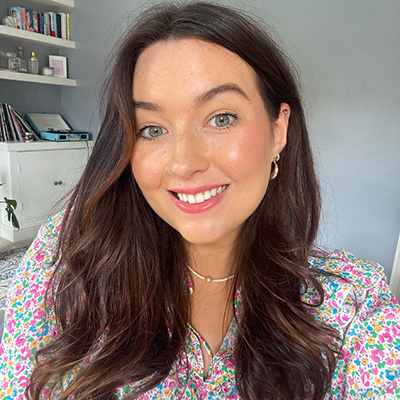
After starting out her journey at Future as a Features Editor on Top Ten Reviews, Holly is now a Content Editor at Ideal Home, writing about the best interior ideas and news. At Top Ten Reviews, she focussed on TikTok viral cleaning hacks as well as how to take care of investment purchases such as lawn mowers, washing machines and vacuum cleaners. Prior to this, Holly was apart of the editorial team at Howdens which sparked her interest in interior design, and more specifically, kitchens (Shaker is her favourite!).